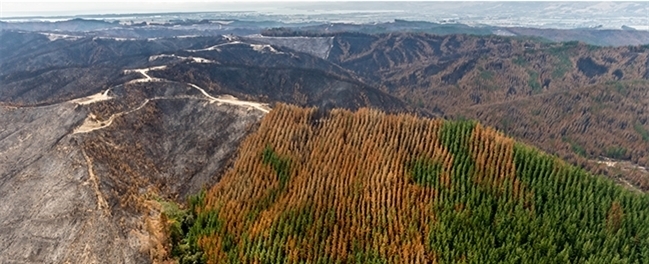
While some scientists say that climate change plays a key role in forest fires, others state that forest fires cannot be explained so easily, fires have a complex structure and there are many factors that affect fires. Even if climate change is not the sole cause of forest fires, when combined with human-related causes, it causes fires to be seen more frequently, to spread over larger areas and to have more devastating results.
Recent forest fires hurt us both materially and morally. On the one hand, our forests are depleted and on the other hand, birds, deer, insects, etc. that make these forests their homes are forced to leave their homes. However, this situation is not only true for Turkey and the Mediterranean countries. There are forest fires everywhere, particularly in the Amazon forests. The fire in the Amazon has also spread to Bolivia, Peru and Paraguay. If you ask what the world is doing in the face of these fires, we can state that only 20 million Euro support has been allocated by the entire G7 Group.

First of all, let's make a situation assessment. As far as we can see, fire seasons are getting longer. Secondly, the amount of burned forest areas has increased; thirdly, with the early melting of the snow, the spring and summer months have become longer and hotter.
Then, which factors are important in terms of fire risks? Although many factors can be mentioned, temperature, soil moisture and combustible trees, shrubs, grass, etc. are the most important factors. These factors can also change the seasons directly or indirectly and cause climate change. Although it varies to a certain extent from country to country, more than two thirds of the fires are caused by humans. Temperature change and dry climate conditions cause the spread of fires to a larger area and difficulties in extinguishing them. Dry climatic conditions also cause the insect colony in the forests to spread over very large areas and cause many trees to rot and deplete. These facts further increase the risk of fire.
In addition to forests, houses, villages, fires also cause the burning of agricultural structures such as coop, barn, pen etc. and displacement of thousands of people and animals due to the destruction of their habitats. When you add the costs of firefighting to all these damages, economic losses of billions of Liras occur. We should also add the fact that the rate of renewal slows down when the soil becomes sterile (decrease of quality in terms of minerals and organisms, etc.).
On the other hand, the smoke that arises during the fires affects the visibility in the areas of square kilometers and impairs the air quality. It causes serious health problems, particularly eye and lung diseases in the elderly and children.

Forest fires also accelerate the changes and imbalances in the ecosystem, resulting in huge amounts of carbon dioxide to be released into the atmosphere. Besides, the amount of carbon dioxide in the atmosphere has increased by 40% since the 1800s due to the use of fossil fuels. Almost half of it is the amount realized after 1985. The gases that cause temperature increase such as methane, nitrous oxide etc. are abundantly found in the composition of the atmosphere. Unfortunately, increases continue rather than the expected decrease as prescribed in the Paris Climate Agreement.
The result of all these factors is climate change. Climate change also extends the dry season, particularly in forest areas, leading to the spread of fires into large areas due to wind and dried leaves etc.